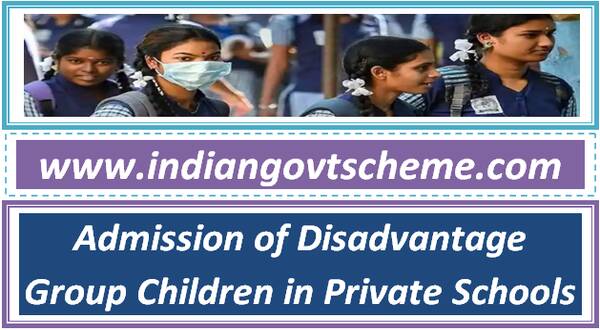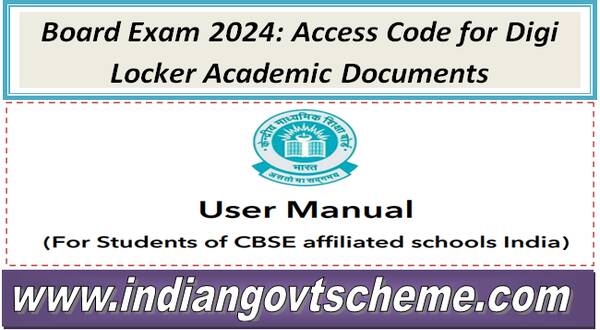Admission of Disadvantage Group Children in Private Schools
Under the Right to Education (RTE) Act, private schools in India are mandated to reserve 25% of their seats for children from disadvantaged groups and economically weaker sections. This policy aims to ensure equitable access to quality education, promoting inclusivity and reducing the educational gap across socio-economic backgrounds.
GOVERNMENT OF INDIA
MINISTRY OF EDUCATION
DEPARTMENT OF SCHOOL EDUCATION & LITERACY
LOK SABHA
UNSTARRED QUESTION NO. 2257
ANSWERED ON 5th AUGUST, 2024
Admission of Disadvantage Group Children in Private Schools
2257. Dr. Amar Singh:
Will the Minister of EDUCATION be pleased to state:
(a) the composition of children from disadvantaged groups admitted in private schools under RTE 12(1)(c) in each category;

(b) the number of students from disadvantaged groups admitted under Section 12(1)(c) of the RTE Act who have dropped out from schools during the last five years; and
(c) the steps taken by the Government to increase the enrollment rate and retention rate of children from disadvantaged groups?
ANSWER
MINISTER OF STATE IN THE MINISTRY OF EDUCATION
(SHRI JAYANT CHAUDHARY)
(a) The Right to Free and Compulsory Education (RTE) Act, 2009 effective from 1st April, 2010 is applicable to all States and UTs and mandates the appropriate Government to provide free and compulsory elementary education to every child of the age 6 to 14 years in a neighborhood school. Section 12(1)(c) of the RTE Act, 2009 provides for admission of children belonging to weaker sections and disadvantaged groups in the schools specified in sub-clauses (iii) and (iv) of clause (n) of section 2 in Class I (or below) to the extent of at least 25 percent of the strength of that class. Section 2(d) of the Act defines “child belonging to disadvantaged group” as a child with disability or a child belonging to the Scheduled Caste, the Scheduled Tribe, the socially and educationally backward class or such other group having disadvantage owing to social, cultural, economical, geographical, linguistic, gender or such other factor, as may be specified by the appropriate Government, by notification. State Governments and UT Governments are the appropriate Governments, in relation to a school established within the territory of a State and UT with legislature as per Section 2(a) of the RTE Act, 2009.
(b) The percentage of dropped out in last 5 years at elementary level including the students from disadvantaged groups admitted under Section 12(1)(c) of the RTE Act who have dropped out from the schools, is provided in the table given below :
| Year | Average Drop Out Rate |
| 2017-18 | 4.0 |
| 2018-19 | 4.5 |
| 2019-20 | 1.9 |
| 2020-21 | 1.3 |
| 2021-22 |
2.0 |
(c) The Department of School Education and Literacy with effect from 2018-19 is implementing an Integrated Centrally Sponsored Scheme for School Education- Samagra Shiksha. The scheme has now been aligned with the recommendations of NEP 2020 to ensure that all children have access to quality education with an equitable and inclusive classroom environment which should take care of their diverse background, multilingual needs, different academic abilities and make them active participants in the learning process.
Under the scheme, financial assistance is provided to States and UTs for undertaking various activities for reducing dropout rate, including opening/strengthening of new schools upto senior secondary level, construction of school buildings & additional classrooms, setting up, up-gradation and running of Kasturba Gandhi Balika Vidyalayas, setting up of Netaji Subhash Chandra Bose Avasiya Vidyalayas, free uniforms, free text books, transport allowance and undertaking enrolment & retention drives. Further, special training for age appropriate admission of out of school children and residential as well as non-residential training for older children, seasonal hostels / residential camps, special training centres at worksites, transport/ escort facility are also supported to bring out of school children to the formal schooling system. Further, under the student oriented component for the children with special needs, financial assistance is provided for identification and assessment of children with special needs, aids and appliances, braille kits and books, appropriate teaching learning material and stipend to girl students with disability etc.
Further, financial assistance upto ₹ 2000 per annum is being provided for Out of School Children of age group of 16-19 years, belonging to socio economically disadvantaged groups, for completing their education through NIOS/SIOS, for accessing course materials and certification.
The Right of Children to Free and Compulsory Education (RTE) Act, 2009, mandates the appropriate Government to provide free and compulsory elementary education to every child of the age 6 to 14 years in a neighbourhood school. Also, Section 10 of the RTE Act states that it is the duty of every parent or guardian to admit or cause to be admitted his or her child or ward, as the case may be, for elementary education in the neighbourhood school.
Under ‘Pradhan Mantri Poshan Shakti Nirman’ (PM POSHAN) one hot cooked meal in Government and Government aided schools is provided to students at the elementary level of education, including Balvatika.
नोट :- हमारे वेबसाइट www.indiangovtscheme.com पर ऐसी जानकारी रोजाना आती रहती है, तो आप ऐसी ही सरकारी योजनाओं की जानकारी पाने के लिए हमारे वेबसाइट www.indiangovtscheme.com से जुड़े रहे।

